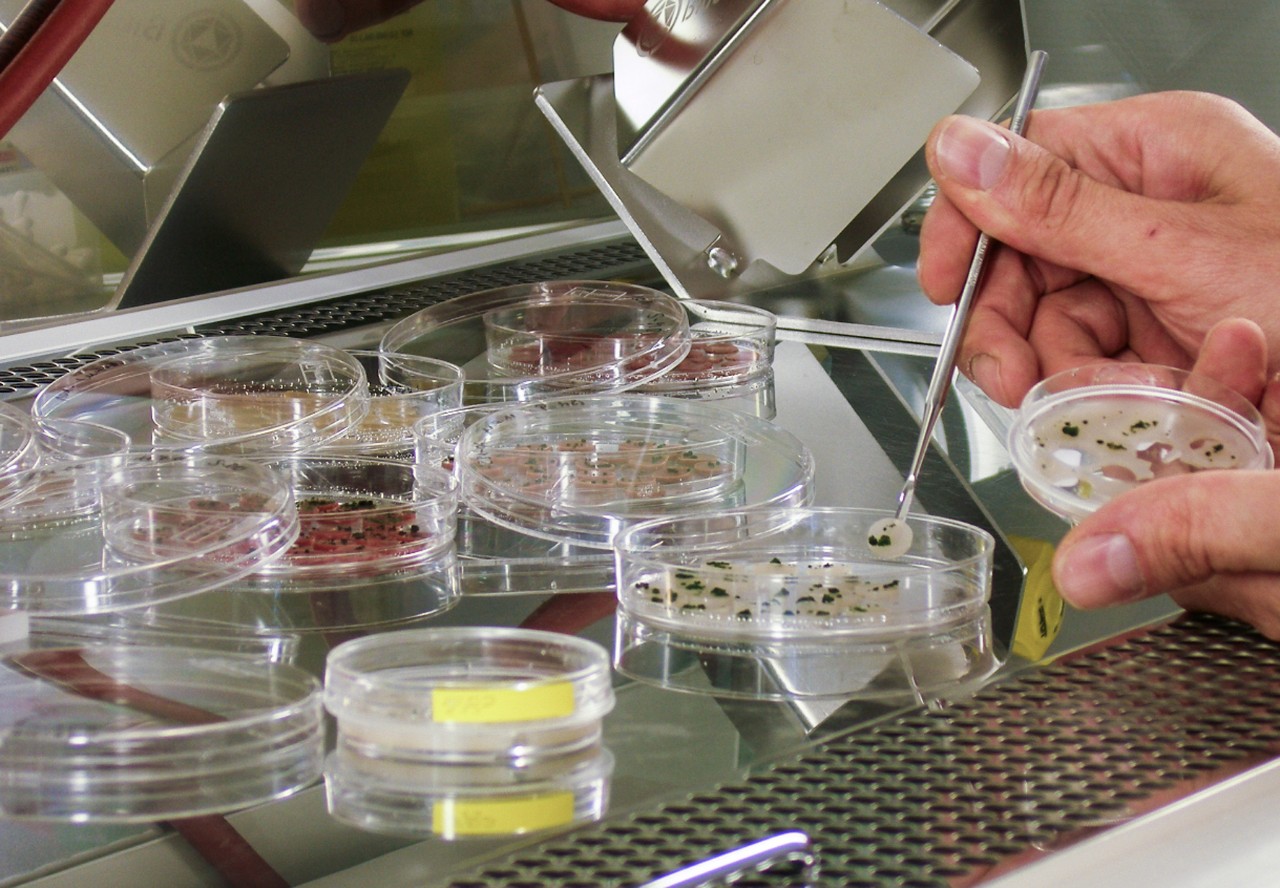Fraunhofer algae en route to ISS
At 11:44pm on 23 July 2014, a series of organisms lifted off into outer space where they will spend at least twelve months on the exterior of the ISS space station. Among the several hundred samples of archaebacteria, algae, lichens, mosses and fungi are two strains from the Culture Collection of Cryophilic Algae hosted by the Bioanalytics and Bioprocesses Branch of the Fraunhofer Institute for Cell Therapy and Immunology in Potsdam.
Dr. Thomas Leya from the Fraunhofer IZI is one of several partners located in Germany and abroad who will work together as part of the BIOMEX project (Biology and Mars Experiment) to investigate which organisms, if any at all, survive in extreme outer space conditions. He is also collaborating with his colleague Dr Jean-Pierre de Vera from the German Aerospace Center on the project. Leya is leading the Extremophile Research and Biobank unit and is responsible for the Culture Collection of Cryophilic Algae, or CCCryo for short. During the scheduled exit into space on 18 August, the samples will be placed on the exterior of the ISS in the EXPOSE-R2 facility where they will be exposed to the ultraviolet and cosmic rays as well as the extreme temperature fluctuations found there.
The two strains from the CCCryo are the cyanobacteria Nostoc sp., a blue-green algae from the Antarctic, and the green algae Sphaerocystis sp. from Spitsbergen. The unit supporting Thomas Leya has been actively researching the adaptation strategies of cryophilic algae (algae which thrive in cold temperatures) for 15 years. Both organisms, which were transported to the ISS using a Progress rocket on 23 July, belong to a group of almost 400 isolates, the majority of which were collected by Thomas Leya during expeditions in the Antarctic and to Spitsbergen. The algae were cultivated and characterised at the Fraunhofer IZI in Potsdam.
"Besides such fundamental scientific questions as those being investigated in the BIOMEX project, we expect these extremophile organisms, which in our case are often well adapted to low temperatures, increased radiation levels and dehydration, to give rise to new products in industry. There is currently a special focus on the cosmetic and food industries," explains Thomas Leya. As part of the BIOMEX and in anticipation of these outer space experiments, laboratory tests have already been carried out at the German Aerospace Center in Cologne, in which the erythroid permanent forms of the green algae proved to withstand dehydration, heat of up to +60 °C, cold of down to -25 °C and also UV rays in certain scenarios. The adaptation strategies allowing for this natural adjustment now need to be explained and transferred into industrial application.
The experiments conducted at the ISS, coordinated by the German Aerospace Center, will also give the international teams an indication of which organisms can survive at all in space or even, for example, on Mars. The results are important in explaining the evolution of life in our solar system. The different organisms will arrive back on Earth in August 2016 at the latest and will be transported to the respective laboratories. This is when the real work will begin for the scientists on the ground.
